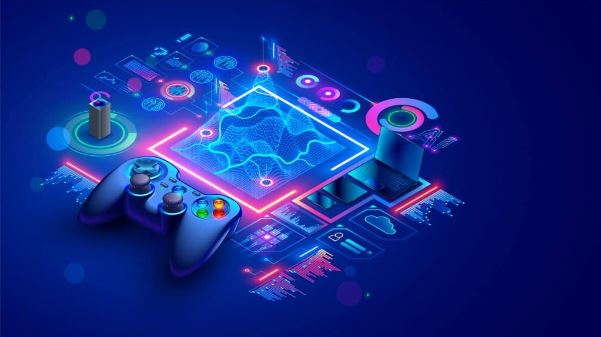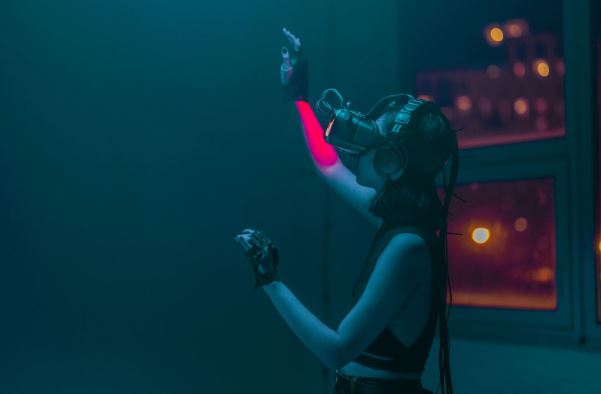 Artificial intelligence or AI has gone from sci-fi fantasy to the engine powering modern game development, flipping game design and player interaction on their heads.
Artificial intelligence or AI has gone from sci-fi fantasy to the engine powering modern game development, flipping game design and player interaction on their heads.
It’s way beyond NPCs on repeat – AI now crafts immersive experiences, spins dynamic narratives, and reacts to players as if it’s got a mind of its own.
Picture this: it’s not just for upping difficulty or some NPC throwaway lines; AI can generate whole worlds and memories in games.
But let’s be real, it’s not all perfect. AI’s quirks can be about as reliable as a Betfinal bet slip, pushing developers to make it look smoother than it is.
This tech wizardry gives players a world that feels alive, but balancing it is no cakewalk, which keeps devs sweating the small stuff.
AI-Driven Adaptive Gameplay
One of the slickest tricks up AI’s sleeve in gaming is adaptive gameplay, where the AI cranks up (or chills out) the game’s difficulty depending on how much of a pro or newbie you are.
Take the Shadow of Mordor series: they dropped the mind-blowing Nemesis System, where AI enemies actually remember your smackdowns and come back with a grudge.
Talk about holding a grudge, right?
This AI wizardry makes it feel like you’ve got personalized arch-nemeses, like your very own villain squad.
- Dynamic Difficulty Adjustment: No more one-size-fits-all levels. The AI watches your every move and dials it up (or down) based on your skills. Game bots with judgment? We love it.
- Personalized NPC Attitudes: NPCs actually remember if you were a jerk to them, and they’ll act accordingly. Friend or foe? Depends on your last smack-talk.
- Unforgettable Rivalries: These NPCs won’t just forget they got roasted—they’ll come back with a vengeance. Think of it as your own little soap opera.
- Replay Value on Steroids: Different AI responses every time means the game’s always fresh, like it just won’t let you go.
- Player Addiction Guarantee: AI’s here to keep you hooked by throwing curveballs you can’t see coming. Harder? Easier? The AI will decide.
But hey, it’s not all sunshine and speedruns. Balancing this so it’s not too predictable but still a challenge? Easier said than done.
When the AI goes from cool to clingy, it risks making gameplay feel like you’re dating a robot—repetitive, predictable, and just a bit creepy.
Procedural World Generation and Dynamic Environments
AI-driven procedural world generation has totally glitched how we see game environments, letting devs whip up massive, unpredictable worlds.
Think No Man’s Sky, where AI is churning out whole planets, ecosystems, and landscapes on the fly, so every player gets a new sandbox to mess around in.
This tech wizardry means devs can skip the pixel-by-pixel grind and focus on the big picture.
But, of course, it’s not all sunshine and renderings—AI-generated worlds can sometimes look more like “copy-paste” than custom-built.
| Feature | Perks | Headaches |
| Infinite Variety | AI dishes out unique environments, keeping the same-old feels out of the picture. | If AI assets start blending, worlds can feel repetitive—a digital déjà vu no one asked for. |
| Scalability | Creates massive maps without needing a dev to handcraft each pixel—time-saver for sure. | Complex code dependencies mean glitchy, out-there results when the algorithms go rogue. |
| Replay Value for Days | New landscapes and ecosystems every load-up = max replayability. | May lose that custom touch of hand-designed levels, giving factory-issue vibes instead of immersive. |
| Living Ecosystems | AI whips up evolving ecosystems, making the world feel alive. | If AI doesn’t nail the parameters, ecosystems can feel off, like nature’s gone into beta test mode. |
AI-generated worlds are a blast until you realize too much automation can turn immersive into cookie-cutter.
It’s a balance between letting the AI do the heavy lifting and keeping that hand-crafted touch—otherwise, players start feeling like they’re in a game world put together by a 3D printer.
Real-Time NPC Interaction and Behavior Modeling
One of the most game-changing developments in AI is the evolution of NPC behavior, making these characters feel more like actual personalities than scripted bots.
Games like Red Dead Redemption 2 set the bar by using AI to give NPCs nuanced reactions, everything from mood swings to memory of past player actions.
NPCs remember if you’ve been a hero or a jerk, and they’ll treat you accordingly, building a dynamic, immersive world. But let’s be real, making NPCs this responsive takes some serious tech muscle.
It’s like trying to run Betfinal on a phone from 2005 – without the right power, you’re bound for lag city.
| Feature | Advantages | Challenges |
| Nuanced Reactions | NPCs respond based on past interactions, making each encounter feel personal and reactive. | Requires massive processing power to prevent lag or glitchy reactions, especially in complex scenarios. |
| Emotional Dynamics | AI models can simulate NPC moods, from friendly to aggressive, giving depth to characters. | If AI parameters go wrong, NPCs can feel “off” or act inconsistently, breaking immersion fast. |
| Memory of Player Actions | NPCs remember your past choices, leading to unique behavior patterns that build immersive worlds. | Building memory that feels realistic but doesn’t overload CPU is a tough balance for devs. |
| Social Behavior Modeling | AI allows NPCs to interact with each other, creating spontaneous, believable social dynamics. | Social models require fine-tuning, or interactions can feel forced, like NPCs are reading a script. |
Sure, this tech brings NPCs closer to reality, but it’s no walk in the park. Even one misplaced parameter can send NPC behavior into uncanny valley territory.
When the AI’s in sync, it’s magic; when it’s off, you’re dealing with a world full of NPCs acting like they’re on autopilot or stuck in a loop.
Conclusion
AI in game dev is both a goldmine and a minefield. With the right code, devs can harness AI to serve up gameplay that adapts to players, worlds that feel endless, and NPCs that act like they’re straight out of a reality show.
But here’s the kicker: it’s all about balance.
Push AI too hard, and it can feel like the game’s running on auto-pilot; dial it in just right, and you’ve got an experience that feels custom-made.
As AI keeps levelling up, so will its role in game design, hinting at a future where games aren’t just played—they react, adapt, and evolve, giving players a wild, immersive ride that blurs the line between tech and magic.








